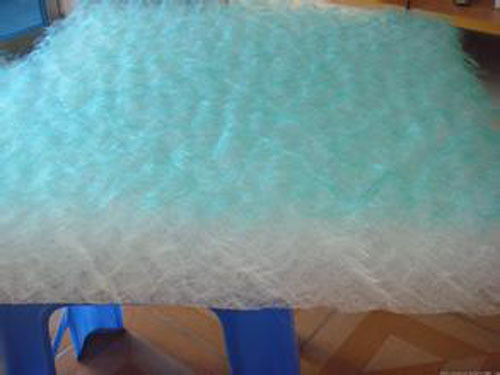
Since the record high in 2010, the recent cotton price has dropped to the lowest level. According to Wei Linyan, consultant of Jinqiao Textile Network, the cotton price for delivery orders in December this year was 49.69 Euro cents (62.59 cents) per pound. Such prices only date back to October 7, 2009. China announced that it would reduce its import volume and cotton prices have therefore fallen by 26% compared to last year.
According to relevant survey data, in 2013, the global cotton end inventory was 15.06 million tons, consumption was 231.8 million tons, and inventory consumption was 65%; China Cotton Ending Inventory was 8.19 million tons and inventory consumption was 106%; global cotton oversupply pattern was difficult in the past two years change. The U.S. Department of Commerce said a few weeks ago that the market is in a transitional phase. Huge cotton stocks are sufficient to meet China's demand in the next four to five years. Only after this stage will China return to the market and re-initiate a price increase.
In 2010, the cotton price crisis that shocked the textile industry was largely attributable to China. As China expects the price of cotton to increase, it will purchase a large amount of inventory, thus pushing up the price of cotton, while other countries look for opportunities to purchase the remaining cotton stock.
For now, one of the obvious consequences of low prices and China's withdrawal from the cotton trading market is that India will overtake China in cotton production. India's cotton production reached 30 million bales, compared with 29.5 million bales in China this year, compared with 32 million bales last year.
Mr. Wei believes that more planting and less demand are important reasons for the decline in cotton prices. Coupled with the preference of domestic companies for imported cotton, because imported cotton prices are lower than domestic ones, cotton stocks are currently very large, and prices will remain low.
Ms. Chu, an analyst at Treasure Island, believes that after a long-term decline in cotton prices, it is unlikely that they want to reverse. Whether it is the domestic cotton price or the US cotton price, it is currently oscillating within a consolidation range. In the short term, it is unlikely that you will continue to enter a downward trend. If you want to reverse, it is less likely.
The current state of consolidation in cotton prices is closely related to production and inventory, and the two have entered a short-term balance. The supply and demand report released by the U.S. Department of Agriculture (USDA) shows that the US 2014/15 cotton production forecast is 16.26 million bales. Estimated at 16.54 million bales in September. A downward revision of the 2014/15 U.S. cotton production estimate led to concerns about short-term supply constraints. It has also become an important reason for the recent rebound in cotton prices.
The reduction in short-term projections constitutes a certain degree of support for the continued decline in cotton prices, which has led to a drop in cotton prices and a slight increase. However, some market participants said that the rise in cotton prices is difficult to sustain because the pressure on global stocks still exists, and the short-term benefits can only make cotton prices fluctuate within a certain range. Icac said in its monthly report: "The global cotton market has an oversupply of 1.8 million tons, and China's cotton support policy has changed. It is expected that cotton prices will not rise to the level reached in the previous two years."
Under the influence of high stocks, cotton prices are not optimistic in the future. Despite the impact of the shortage, cotton prices may cause a small rebound, but it is difficult to constitute an upward trend. Therefore, with the short-term impact of cotton production and the long-term impact of inventory, price increases are difficult. For the market, Guotai Junan Liu Shangqing believes that the US Department of Agriculture’s report has a certain boosting effect on the domestic cotton disk, and in the short term, cotton will maintain a wide range of shocks. However, cotton fundamentals remain weak, and the general trend is still downward.
FR Jackets has Various multifunctional.for example,Anti-static FR Jackets,anti-UV FR jackets,Anti-Mosquito FR Jackets,Arc Flash FR Jackets Anti-acid and Alkali Jackets and so on. Choose a reliable FR Coverall,FR Jackets,FR Shirts,FR Pants based on the different hazards present at the site.The safety FR long sleeve Jackets can effectively protect your arm,which are widely used in mining minerals, oil, outdoor operations, forestry army and so on. And the FR Jackets are harmless to human body, and do not contain formaldehyde, heavy metal ions and other harmful substances.The FR Jackets has a great quality guarantee.Which has its own laboratory for each piece of cloth after layers of testing and testing.To provide customers with safe and secure FR Jackets.
Fr Jackets,Safety Jacket,Work Jacket,Workwear Jacket
Xinxiang Xinke Protective Technology Co, Ltd. , https://www.coverallsuits.com